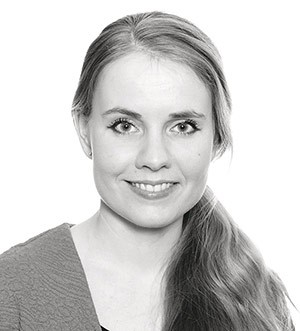One can say something about most things, but the way one says it is crucial

Photo: Sturlason Foto
I have been employed as deputy editor of the Journal of the Norwegian Medical Association for one year, in the course of which I have learned a lot about how an academic editorial board works and how much work goes into each article. A number of editorial assessments are made regarding relevance, news value, publication ethics, genre criteria and – not least – whether the message is likely to get through to the reader.
The editorial board of the Journal of the Norwegian Medical Association includes approximately 30 employees in varying full-time equivalents, but the main and most important work behind our 22 annual issues is done on a voluntary basis by our authors and peer reviewers. In general, our content is based on spontaneously submitted manuscripts, and all published articles have been reviewed by two or more colleagues who have special competence in the relevant field. Peer review is time-consuming, unpaid work, but crucial for the quality of the published material. Without such external academic review, the Journal of the Norwegian Medical Association would be unable to refer to itself as a scientific journal.
Most of my working hours are spent in front of a computer screen, where I read and edit manuscripts. As editor, one can easily be duped by an author’s seductive phrasing or impressive title, or be carried away by a pithy line of argumentation or an intriguing new research finding. To prevent erroneous assessments all manuscripts are read by more than one editor, and no academic manuscript is accepted for publication before having been thoroughly discussed in at least two editorial board meetings.
The manuscripts that we receive cover a wide range of topics – from statements of opinion to newly discovered mutations. What they all have in common is that the authors wish to communicate a message to the reader, and in this they succeed to a varying extent. The main insight that I have gained during my year at the Journal of the Norwegian Medical Association is that when writing, one needs to have a clear opinion regarding the message to be conveyed and the nature of the target group.
Doctors are the primary target group of the Journal of the Norwegian Medical Association. Our goal is to be a vehicle for education, to encourage knowledge maintenance, research and development of the discipline, promote health-policy debate and serve as a membership magazine for the Norwegian Medical Association (1). This is an ambitious goal. Norwegian doctors are a heterogeneous group – they include young and old, they work in various specialisations and have widely varying interests. The Journal of the Norwegian Medical Association shall provide a common meeting ground for all of them. This makes it a challenging task to be one of our authors.
The Journal of the Norwegian Medical Association adheres to the ethical norms in the Ethical Code of Practice for the Press. These include a requirement to «emphasise honesty and sensitivity in content and presentation, and make plain what is factual information and what is comment» (2). Irrespective of the topic of a manuscript, I collaborate with the author(s) to present a message which is clear, honest and to the point. It is especially essential to distinguish clearly between the author’s own opinions and what can be justified scientifically. As Charlotte Haug, former Editor-in-Chief, told me: «In this journal one can say something about most things, but the way one says it is crucial».
Many authors have specialised competence or in other ways are deeply immersed in their subject matter. This is primarily a positive thing, since it provides us with manuscripts that are genuine and academically solid. However, this may also cause the message to be somewhat inaccessible to a reader who has little previous knowledge of the topic at hand. In medical school we learned that the doctor must approach the patient on the patient’s own premises. This applies to authors as well – to be read and understood, the author must approach the reader on the reader’s own premises, which tend to be different from the author’s. As editor I serve as the link between the author and the reader, and one of my key tasks is to help the authors communicate their message to a wide audience. I therefore often ask the authors the following questions: What do you want to say? In what context will this be read? Why should Norwegian doctors be informed of this?
The editorial board of the Journal of the Norwegian Medical Association has no independent agenda beyond its mission (1). We rely completely on a close collaboration with doctors to reach our goals, and we continuously request feedback stating what we can do to improve. Authors who write for the Journal of the Norwegian Medical Association often attract attention from colleagues, and they have ample opportunities to place issues on the agenda when articles are taken up by social media and the press. The editorial board wishes to be a contributor that helps the author prepare the manuscript in such a way that the message reaches the readers in a clear and correct way.